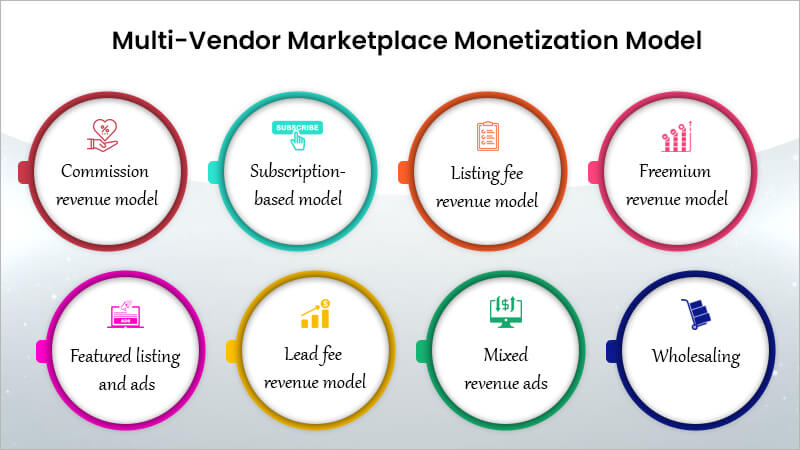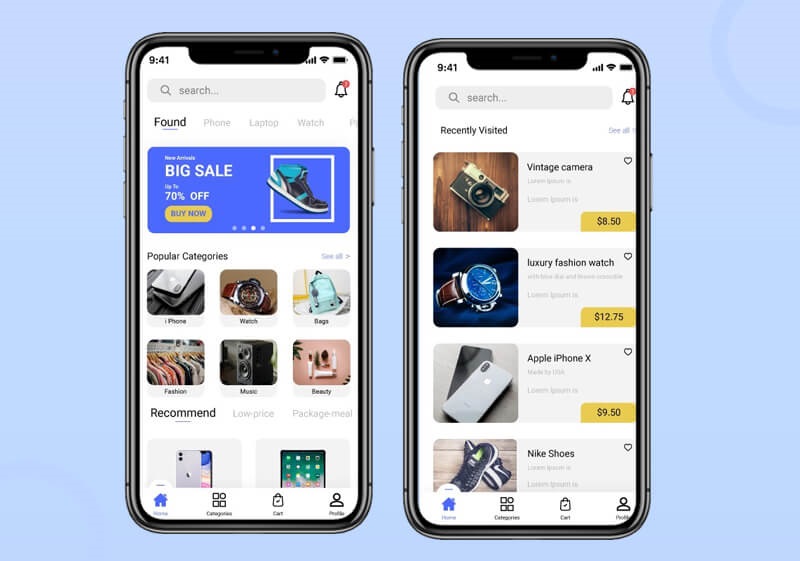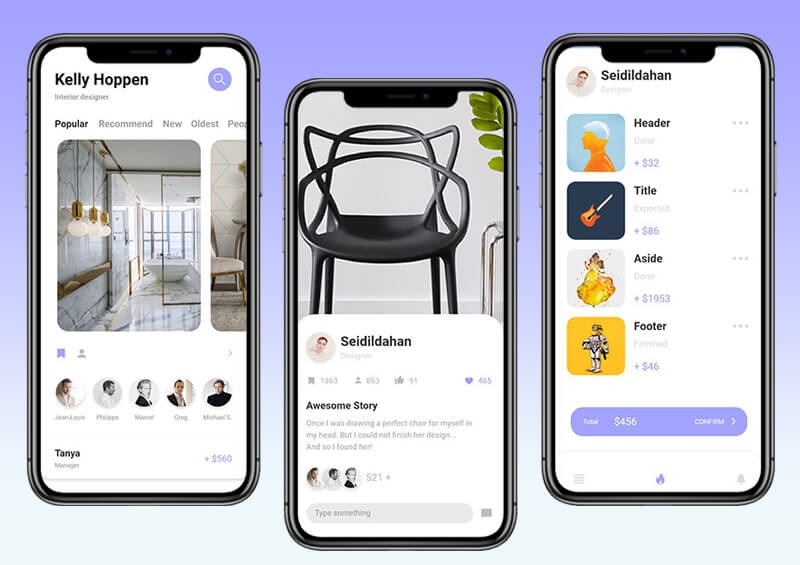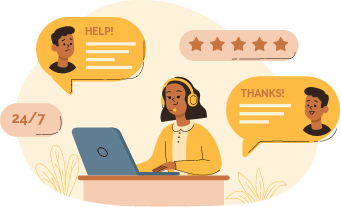Sometimes, there is no next time, no time-outs, no second chances. Sometimes, it’s now or never. So today is the best time to consider a multi vendor marketplace development or build a multi vendor marketplace platform. Customers today don’t want to waste their time gradually looking for a list of products on various platforms. In fact, they hunt for a fast online shopping experience.
People welcome the consolidated multi vendor ecommerce website/platform that can save their time and effort. And such an option for them is the multi-vendor e-commerce marketplace.
Let’s talk about some data. As per the records by Statista, the e-retail sales from the e-commerce platform are recorded at $6 Trillion in 2023. The data is fascinating, though. Isn’t it?
These data encourage many business owners to take their leap of faith to the next level by exploring the market of e-commerce. So, this analysis will force you to think of multi vendor ecommerce website development.
Let’s clear out more. This blog is about the approach to building a multi-vendor marketplace website & app design with development, as at the end of the day, the online marketplace website or app will be the center of your business.
Let’s begin with the guide abt multi vendor marketplace development.
- Market Stats for Multi Vendor Marketplace Development
- What is a Multi-Vendor Marketplace?
- Benefits of multi vendor marketplace development in 2024-25
- Multi Vendor eCommerce Marketplace – Need of the time
- How to Build a Multi-Vendor Marketplace?
- Multi-Vendor Marketplace Monetization Model
- Top Multi-Vendor Marketplace Platforms To Build eCommerce Marketplace
- Multi-Vendor E-commerce Platform Features List per Users
- Features inside the Content Management System (CMS)
- Tech Stack for Multi Vendor Marketplace Development
- Team Required for Multivendor Marketplace Development
- What Impacts Multivendor Marketplace Development Cost
- Summary for multivendor marketplace development guide
- Conclusion
- Frequently Asked Questions
Market Stats for Multi Vendor Marketplace Development
Due to the increase in the need for new services, the companies are looking for some automated solutions. So there is an obvious rise in the market for multi-vendor services.
The multi-vendor e-commerce marketplace system helps the vendor to support various businesses in managing their services with a reliable vendor management lifecycle.
The multi vendor ecommerce website would display multiple product catalogs on the platform, which the vendor has in its inventory and the products that the other vendors or firms make. Thus, when you plan to build a marketplace website, the following stats can be very helpful in understanding and analyzing the business trends in eCommerce industry.
Pin down with more stats for multi vendor marketplace development:
- If we look over the stats, the global multi-vendor services are expected to grow from $51.46 B in 2017 to $60.14 B by the end of 2023, with an annual rate of 2.52%.
- With the rise in technologies like IoT and AI, 46% of the companies are succinct to use their services to limit any cause of halt.
- The top market players that would be part of multi-vendor services are HP, Hitachi, IBM, NetApp, etc.
- In 2020, 21% of the companies switched to the multi-vendor marketplace.
- Coming next to the Statista stats, Amazon is found to be the most popular online marketplace with monthly visits of 5.2 B in April 2021. Next to it is eBay, with monthly visits of 1.7 B.
- Amazon is the most visited marketplace in the US, while eBay is the most popular online marketplace in the US.
- From 2000 to 2020, as per the customer satisfaction service index, eBay has recorded 75 index points out of 100.
The huge stats create an interest for us to know in detail about the multi-vendor marketplace. So let’s understand it with the definition and then so on.
What is a Multi-Vendor Marketplace?
Imagine the platform where you get all of the essentials under singlehood, just by a single tap. What else do you need? That’s the real functionality of a multi-vendor marketplace in a nutshell.
There are plenty of platforms available within one place. In short, the multivendor marketplace website is the one-stop destination for all buyers and merchants.
Benefits of multi vendor marketplace development in 2024-25
The multi-vendor or multi-seller supplier marketplace is known to be the ‘zero inventory model’ since these platforms could not have any of the product inventory of their own. It brings out the opportunity for retailers, vendors, manufacturers, and brands to grow together. Thus, many look to create a marketplace app development as their next big project targeted towards a special niche.
Benefits Of Multi Vendor E-commerce Platform for Owners
- This multi-vendor e-commerce marketplace offers good ways for the owner to generate revenues. For every sale, the owner could charge a nominal charge.
- The owner has the great choice to sell their products in a single place. People and vendors can trust you more as you have a trustworthy marketplace to attract them and inquire them directly.
- With the multiple options to go on for hassle-free payments, it becomes easier for people to automate their payments.
Customers’ Benefits of Multivendor Marketplace development
- Customers get an effective marketplace to place their orders online.
- They have an incentive list of orders with huge discounts on a daily basis to collect.
- This increases their trust and satisfaction.
Benefits For Sellers
- Vendors have the access to handle their accounts and dashboards. Place their product details, set the prices, images to give more idea to the customers to choose their choice of products.
- They have the choice to automate the pricing plans as per the products. They can make changes in the price as per the demand of a similar product.
- Vendors can campaign the post-sales activities to promote their products on different channels to get more details of the customers.
- They have the accessibility to analyse the behavior of the customers to place more similar suggestions to them.
Read Also: How to Make Similar App Like Amazon eCommerce Marketplace
Multi Vendor eCommerce Marketplace – Need of the time
E-commerce Multi-Vendor Website Builder can resolve any technical snag in case the vendor caught themselves in the middle.
The multi-vendor place is thriving in the market, setting the benchmarks. The systems are so fragilely implemented to handle each visitor with full security and payment options.
The model is placed across different verticals such as e-commerce, food and delivery, healthcare, retail, and many more.
So fasten your searching process and pick up the right e-commerce app development company to get the maximum ROI for your business. We are also know as best marketplace app development company, so you can always talk to us for FREE consultation.
How to Build a Multi-Vendor Marketplace?
It is a very crucial phenomenon to create a multi-vendor marketplace. How the consumer and vendor place out their steps, check out more the below points for marketplace app or website design and development
- First, the business needs to focus on finding out your target audience.
- Vendors set up their virtual shops.
- Vendors place the best products under the segment.
- They have to apply the right strategy to grab a large customer base.
- The owner integrates the secured pathway for the payments.
- The vendor does the registration process with the virtual store as per their niche.
- Inside the dashboard, the vendor has multiple lists to manage his product listing.
- In the meantime when any sale happens, the store owner starts the packaging process and the vendor collects the order for delivery.
- The store owner takes the commission to the sold product then dispatches the remaining amount to the vendor.
- That is how everyone gets some kind of benefit in the process.
Only to build a marketplace app is not the end of the task, in order to get some profit from it, it is wise for you to add a revenue model into it.
Multi-Vendor Marketplace Monetization Model
The multi-vendor marketplace platform business model is an online platform for the vendors and the merchant. For every model, one thing is common that the user has to pay a penny in order to get lucrative services from the online marketplace. Here in this section, there are the different revenue-generating models we adopt while some of them offer additional revenue streams to the pack. To develop a profit making business you should be aware of the below revenue models while considering online marketplace website design and multi vendor marketplace development.

Let’s look at the best revenue-hulking models for multi vendor ecommerce website.
1. Commission revenue model: In this model, the owner of the app charges a small commission to both supplier and the customer for each transaction done via the app. This attracts more suppliers.
2. Subscription-based model: Generally, this type of model charges a fixed amount of money to the user to access the premium services of the platform. This attracts more clients.
3. Listing fee revenue model: Therefore, this type of model evolves a small cost to the clients for posting the ads on their platform. The vendor generates the revenue or profit from every ad on the client. For example, Etsy is such a marketplace.
4. Freemium revenue model: This type of marketplace where both free and premium products are available on the platform. This model could be implemented to add more leads to the platform and gain profit in a faster way. In short offer it Free first and once users are on your platform, get them to pay.
Freemium is not easy, but when you get it right, it is awesome!
– Brian Balfour, VP Growth, Hubspot
5. Featured listing and ads: In such a listing model, vendors can widen the visibility of their platform using advertising. This way flows additional revenue to the streams. For example, Zillow used such a model for real estate to charge the agents for advertising their listing on the platform. Surprisingly it worked out very well.
6. Lead fee revenue model: Ideally the supplier gets enough genuine buyers by paying some amount of money. What they do is order a bid for the customer to get decent users for their platform, which they can retain for the future as well.
7. Mixed revenue ads: In such kind of revenue-generating model, there is mixed way to gain revenue from several sources
For example; Amazon is using such a model where different seller groups with different commission models like merchants and sellers. The individual seller pays a small part of the $0.99 fee for each item sold on the online marketplace, while the merchants pay a fixed monthly fee of $39 to merge with the virtual store.
8. Wholesaling: Using this model the owner can buy the goods or items in large quantities at the wholesale rate at a discounted price.
In order to get the right cliche of revenue built to your platform, you need to look at all of the glimpses of the above monetization models. Adopt any of the models suitable for your multi-vendor business in the running trend in the future.
Read Also: Leverage the Power of AI for Your Ecommerce Business Success
Top Multi-Vendor Marketplace Platforms To Build eCommerce Marketplace
To build a multi vendor e-commerce website, you must have to lay it on a strong base. These leading marketplaces help vendors and businesses to convert their online shop into the marketplace easily.
There are various categories of platforms for the multi-vendor app.
- SaaS: It is an entirely subscription-based platform.
- From the scratch: This is the type of platform created using coding from the start.
- Open source: It is a kind of ready-made solution for the app vendors and for the businesses and customers. There is no hidden fee. The vendor needs to pay a one-time fee in order to access the platform with the authority. For example, Shopify, Magento, and WooCommerce.
Let’s understand more of these multi-vendor platforms.
1. Shopify – Best multivendor e-commerce marketplace Development Platform
It is known to be one of the leading multi-vendor marketplaces for customers and seller’s. In this common section, customers can buy and sell the products on the secured path. This inclusive bunch of platforms allows the vendors to create their channel to outsource the products from their inventory to the public.
Shopify has a powered pack platform where more than 5 lakh of businesses have to streamline their operations directly to the market. For the last few years, Octal has offered a mobile app integrated with Shopify which is best for the users.
2. Magento – Most Popular multivendor marketplace development platform
Magento is another giant in the public domain of the e-commerce marketplace with more than 2 lakh online stores to obtain customized and functionally driven e-commerce solutions. This multi-vendor application offers intrinsic features like multi-plugin support to combat the different inventories. Magento is also quite a popular CMS for the design and development of multivendor marketplace websites. Magento offers many design templates or themes to build a marketplace web app that is responsive in nature.
The vendor places their detailed product list in real time to showcase their entire list to the panel. Plus, there is a transparent payment channel for the easy dispatching of money transactions.
3. WooCommerce – Multivendor Marketplace app development using WordPress
It is one of the best choices for the multi vendor marketplace development, free for both the merchant and the user. Top rated by the WordPress plugin, it offers different customizations to choose from, like themes, add-ons, widgets, etc.
Build your multi vendor ecommerce platform with WooCommerce just by simple installation using the admin panel. Plus, hassle-free payments make it more reliable to customers like Paypal, COD, and others. Hence, Specifically, people across the world prefer to use WordPress and WooCommerce plugins to build a marketplace web app.
Multi-Vendor E-commerce Platform Features List per Users

Customer Features – Multi Vendor Ecommerce Platform
- Social & Sign-up Login
- Product listing with features
- Product detail page
- Ratings & Reviews
- Favorites listing
- Questions & Answers
- User profile
- Billing & shipping addresses
- Delivery status
- Add to cart
- Checkout page
- Order history & tracking
Vendor Features – multi vendor ecommerce platform
- Social and Sign-up Login
- The product, order, returns, and inventory management
- Reports & analysis
- Offers & Discounts
- Settlement module
- Feedback & seller support
- Notifications
- Ratings & Reviews
For Admin – multi vendor ecommerce website
- User & admin user management
- Product & seller management
- Logistics & banner management
- Offers & discount management
- Payment & refunds management
- Category management
- Feedback & support
- Reports & analysis
Advanced Features to Consider for Multi Vendor Ecommerce Platform Development

- Multiple Payment Options: Customers prefer to have multiple options to make payments so they don’t feel bound. So when you build a marketplace app add different payment gateways to them for their hassle-free and secured experience. Debit card/ online payment, COD, credit card, UPI, ewallet app development, net banking, and others.
- Social Media Integration: Give your customers the door to log in via multiple platforms. Social media networking is the fast and best way to connect with customers. Plus the users feel more connected with the app if they share it on social media about the reviews, discounts, coupons, etc. just one-tap login and you are all set to go.
- Analytics: Live stores face huge sales and traffic on a daily basis. So it is a very tricky aspect for the owners and vendors to keep track of the insights and trends of the niche domain. The real-time analytics feature highlights the major points like inventory management, user behavior, and sales projection.
- Easy Registration Process: It is one of the main concerns of the user to register on the app vendor platform through an easy process.
- Real-Time Tracking: The status must be well known by the users via their profile. This is an important feature in the multi-vendor app especially for the clients to make themselves more connected.
- Multi-Vendor CMS: The complete Multi-Vendor CMS is an important feature when you build a of the multi-vendor marketplace app or website. This allows users to purchase their items easily. Online sellers can manage their inventory and guide the admin to control the operations.
Features inside the Content Management System (CMS)
- Well-performed search engine: a guided self-performed engine quickly searches out the right items as suggestions to the customer.
- Flawless checkout tool: secure payment gateways allow the client and the vendor to easily migrate of payment channels into the application. This finally helps the customer with quick transactions.
- Reviews and ratings: users while purchasing any of the goods, want to curate the product’s info. The reviews and rating allow the user for the trust-building of any of the products quickly before deciding to buy them.
- Payouts management: easily handle the seller commission and payments.
Tech Stack for Multi Vendor Marketplace Development
The technology stack is the combination of languages and software tools for its implementation. It is no brainer that the tech stack is a vital factor for the development of the multi-vendor app. Below is the tech stack used to create a marketplace app and website in 2024.
- Front-end; Angular.js, HTML, CSS, symphony (php framework), C++, Java, Scala.
- Back-end; ROR( Ruby On Rails)
- Programming languages; Backbone.js, Fusion.js, Express.js, Node.js.
- LAMP; Linux, Apache Web Server, MySQL, PHP or Python scripting language.
- Database Server; Postgresql, MongoDB
- Web server; Apace Server, Nginx
Firebase by Google, dynamo DB by Amazon - Storage; AWS Amazon
- Api building; Swagger+ rail API + grape framework
- CMS; WordPress
- Email Marketing; Mailchimp, Symphony, Mandrill
- Payment gateways; PayPal, Stripe, Authorize.net, Braintree
- Analytical tool; Piwik, hotjar, woopra, kissmetrics
- CRM system; Salesforce, Zoho, info flow, Microsoft dynamics
- Tools to integrate the online store with the multi-vendor marketplace; Sellbrite, Nchanne
Team Required for Multivendor Marketplace Development
To make a robust multi vendor ecommerce website like Amazon or Etsy, it’s quite obvious for you to choose some of the best people from the industry. In general, for mobile application development, there is a team to transform the idea of the multi vendor ecommerce website into a significant buzz. Following team of skilled resources are required to build a marketplace app.

- Project manager
- Business analyst
- System architect
- DevOps
- Quality analyst
- Developers
- Designers
- Testing engineer
- Marketing specialist
- E-commerce developer
- Support engineer
What Impacts Multivendor Marketplace Development Cost
How Much Does it Cost to Develop the Multi-Vendor App?
The cost of building a marketplace website & mobile app design and development depends on many factors. Without waiting a while, let’s start with the factors that affect the final cost of the web design of the marketplace and app development.
Read Also: Fashion E-commerce Mobile App Development: Cost & Key Features
Type of multi vendor ecommerce platform :
If you want to build a robust platform like Amazon, you must have a secure hosting platform to make the platform run worthwhile.
It is one of the important tech stacks on which the cost of the multi-vendor app depends.
Security Level of multivendor ecommerce platform:
The customer is afraid to choose any random platform and share their important information. Your platform must have secured payment and customer financial data protection to access the different payment methods.
- Add Security Certificate: a valid certificate replicates the identity and trust of the platform. Make sure that it is comprehended with SSL token-based certificates to protect any of the online data and make it safer.
- Backup; the data is situated on multiple cloud-based platforms, there must be a backup or copied off the files to remain safe in case of any failure.
Design of the platform:
In multivendor marketplace development, design is the first perspective to get the maximum attention of the user. Hence, web design & app screen design of the multivendor marketplace is crucial for the project’s success as the UI/UX of the app decides if the user will stay or leave, never to return again.
Multivendor Marketplace Development Cost:
How much does it cost to develop multi-vendor marketplace platform?
How many levels of integrity, code efficiency, and features are added inside the project decides the cost of the multi-vendor marketplace development.
The next crucial factor is the region to hire mobile app developers, they have charged hourly rates for the app creation.
- U.S. Based Company: $80-$250/hour
- Eastern-Europe Based Company: $50-$150/hour
- India-based Company: $20-$80/hour
To conclude everything, the multivendor marketplace development cost is $25k to $35k. While the advanced featured app would cost you around $50k.
Summary for multivendor marketplace development guide
MultiVendor e-commerce apps stagger opportunities for many businesses worldwide. Under the bonnet, the multi-vendor apps have feature-rich solutions like great storefront web design for the marketplace, convenience, and easy use, use of powerful SEO tools, getting the extent of the sale using the mobile platform, ready-made templates for the different business types, and many more. It is the one-stop destination for everyone to satisfy their needs. Multivendor Marketplaces run successfully and help the vendors and owners. Thus, there is a recent trend to build a marketplace app, and development has been on the rise for the last couple of years.
After the end of Covid pandemic, For many businesses, multivendor marketplace development is a top of priority. As they realized the value added the marketplace has over a single vendor-operated e-commerce business. The product would not fall down in the competition; this adds extra features to the app, which may raise the cost of production.
Summarizing all of the facts, the multivendor marketplace development cost would lie from $20k to $35k. While the app with advanced features would cost you around $50k.
Conclusion
In conclusion, the e-commerce market brings out daily innovations. Customers are high on expectations and demands, to nurture them wisely, businesses need to focus on important factors.
The market stats clearly indicate that the recent shifts bloomed into the e-commerce market, triggering the rise of more multi-vendor markets. Businesses have hired analysts to understand the behavior of the consumer and their buying patterns.
The best multi-channel source serves the customers with the best functions and features like mobile customization, content management systems, SEO practices, security standards, etc.
So what are you waiting for? Hire today the best iOS app development company to place all of the best features within the marketplace website & app development. Connect with us for FREE Consultation Today.






















